Peregrine falcons are incredibly impressive hunters, and are one of the most unique species on the planet. This is because they are the fastest animals on earth! These skilled flyers are both impressive and adaptable to a number of different environments. Read on to learn about the peregrine falcon.
Description of the Peregrine Falcon
Peregrine falcons have dark, slate-colored feathers on their backs, and lighter cream-colored feathers on their stomachs. The lighter feathers are dappled with darker spots. They have long tail feathers that are dark colored, with a white band at the ends. Female peregrine falcons are approximately 30% larger than males, but they look very similar in color.
Interesting Facts About the Peregrine Falcon
Their most notable trait, incredible speed, is not their only interesting characteristic. These falcons are incredible survivors. They are not only skilled and efficient predators, but also quite adaptable to new environments and different circumstances.
- Need for Speed – Let’s tackle the incredible speeds that falcons can reach before delving into any other adaptations. While hunting, falcons fly high above their prey, and cruise in search of a likely target. When they spot something to eat, they fold their wings and perform a hunting stoop. This hunting stoop is a high speed dive, during which they can reportedly reach speeds up to 242 miles per hour!
- Urban Environment – Peregrine falcons are incredibly adaptable creatures. In the face of human urbanization, falcons have improvised for the lack of trees and wildlife. They have begun to nest on high rises, using man-made structures in place of natural nesting locations of cliffs and trees. They have also found an incredibly populous prey source… pigeons!
- Eyes on Growth – Falcon chicks, known as “eyases,” are virtually bottomless pits. They can eat incredible amounts of food, working their parents to the bone to provide for them. In the first six days of life a peregrine falcon chick will double in weight, and by three weeks old they are ten times their hatching weight!
- High-Velocity Hunting – Falcons, like all birds, are relatively fragile. An injury could potentially result in starvation and death, so peregrine falcons are extremely careful while hunting. The falcons strike their prey with a clenched foot, stunning or killing it on impact and avoiding potential injury.
Habitat of the Peregrine Falcon
Peregrine falcons are able to survive in a variety of different habitats. They can be found in urban environments, mountains and cliff sides, river valleys, and coasts. Some will migrate during winter to more forgiving climates, but many are year-round residents.
Distribution of the Peregrine Falcon
These falcons are extremely widespread birds, and there are subspecies across the planet. They are found in Australia, China, India, Russia, much of Europe, Africa, western South America and North America, and well as the American Northeast. Some of these subspecies have been reduced to dwindling numbers by human activity, but the population as a whole remains stable.
Diet of the Peregrine Falcon
These falcons prey mainly on medium-sized birds. Some of their most common prey species are doves, pigeons, ducks, songbirds, and shorebirds. Most of the birds they capture range in size from under an ounce to two and a half pounds, but they have been known to hunt prey up to six pounds.! When hunting, peregrines fly high above their prey, and dive at immense speeds to strike and stun it.
Peregrine Falcon and Human Interaction
In the past, peregrine falcons have suffered from direct and indirect human interaction. The most notable decimation of falcon and other bird populations occurred as a result of the now illegal pesticide, DDT. When in use, the pesticide infected water sources.
The bird’s prey would consume the pesticide in the water, and after eating many prey items the concentration of DDT in the falcons would reach detrimental levels. This is called “bioaccumulation,” and it occurs in a number of different pollutants. The most devastating impact of the DDT was the thinning of eggshells. Birds would attempt to incubate eggs, and break the shells, effectively stopping reproduction of large numbers of birds.
Domestication
Peregrine falcons have not been domesticated, but have been successfully bred in human care.
Does the Peregrine Falcon Make a Good Pet
These birds do not make good household pets, because they require lots of space to fly and exercise. With that said, they are quite popular birds for use in falconry. They can breed in human care, and work well with handlers when hunting wild game. They are relatively large falcons, and require a more advanced falconer to care for and train them.
Peregrine Falcon Care
As discussed in the previous section, peregrine falcons need space to fly. Their hunting techniques require extreme height, making secure caging rather difficult. Luckily they can be trained to work with handlers and free fly. Falcons should be provided a diet similar to that of their wild counterparts.
When used in falconry, they may be fed the birds that they catch, but a pre-prepared diet will help prevent potential parasites or diseases your bird may catch from wild prey. They can commonly be fed frozen (and then thawed) chicks, chickens, rats, and mice.
Behavior of the Peregrine Falcon
Peregrine falcons are not particularly social birds. They will remain solitary, or in pairs. These birds are monogamous, which means they choose a partner and typically mate for life. Pairs will defend territories during the breeding season, and each pair is at least three quarters of a mile away from the next.
Solitary birds searching for a mate will perform aerial acrobatics. These acrobatic skills translate well into predatory skills, and females will pick a male that can provide well for her chicks. Males will even pass food to females in midair in an attempt to woo them.
Reproduction of the Peregrine Falcon
Upon choosing a mate, the falcons will build a nest. They normally choose cliff edges for nests, but have been known to select large hollow trees as well. In urban areas, it is not uncommon for pairs to nest on tall buildings or bridges. The female peregrine lays three or four eggs in her nest, and incubates them for about a month.
The peregrine falcon chicks, known as eyases, are covered in white downy feathers, and have hilariously large feet. Both parents hunt and feed the eyases, and they grow rapidly. After a month and a half the chicks will fledge, but may remain dependent on their parents for another month or so.

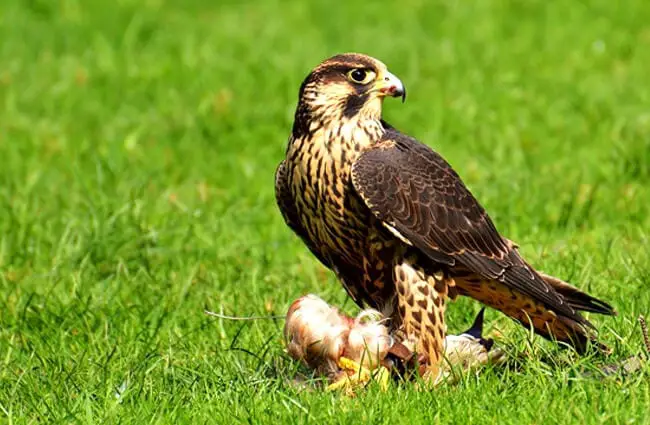


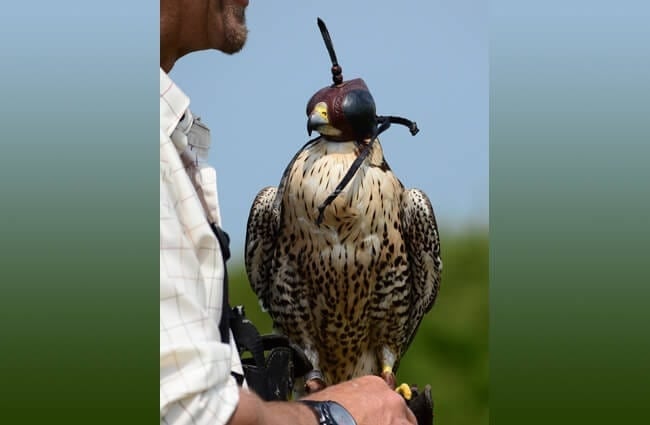
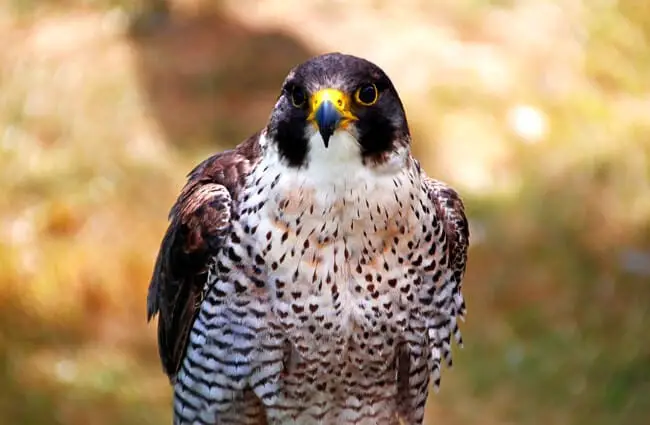
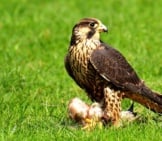
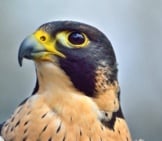
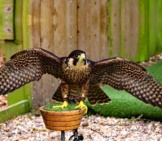
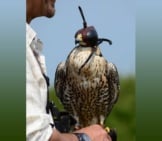
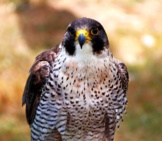
![Red Angus Closeup of a beautiful Red Angus cowPhoto by: U.S. Department of Agriculture [pubic domain]https://creativecommons.org/licenses/by/2.0/](https://animals.net/wp-content/uploads/2020/03/Red-Angus-4-238x178.jpg)












![Red Angus Closeup of a beautiful Red Angus cowPhoto by: U.S. Department of Agriculture [pubic domain]https://creativecommons.org/licenses/by/2.0/](https://animals.net/wp-content/uploads/2020/03/Red-Angus-4-100x75.jpg)

